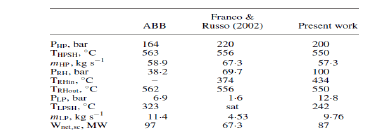
- #Ratio of ram pressure thermal pressure code
- #Ratio of ram pressure thermal pressure professional
- #Ratio of ram pressure thermal pressure series
The effect of the mechanical ventilation flows on the natural flows through the multi-room compartment doorways were investigated in. As high as 3000 Pa over pressures were observed with fires of about 1 MW. The fuel mass loss rate was reduced simultaneously, though. They found that closing the ventilation paths, and exhaust ducts in particular, during the fire increased the pressure significantly. Prétrel et al investigated the influence of the enclosure airtightness on pressure using experiments and theoretical analysis.

More recently, the experiments within the OECD PRISME programme have produced detailed information about the development of compartment pressure, ventilation flows and liquid pool fire dynamics in a very air-tight compartment, reported in numerous articles.
#Ratio of ram pressure thermal pressure code
Unfortunately, neither the heat release nor the mass loss rate of the fire were measured, thus limiting the possibility of quantitative analyses, such as a code validation. They observed that even the mechanically driven ventilation flows were reverted according to the direction of the pressure. By adding a mechanical ventilation to the same configuration, the over pressures were changed to 900 Pa and under pressures to \(-1200\) Pa. They reported over and under pressure peaks as high as 1200 Pa and 1800 Pa respectively. Hägglund et al. have measured the pressures resulting from liquid pool fires in a compartment with only one, relatively small vent to ambient. The smoke management calculations typically assume that pressure differences across the vents are dominated by the hydrostatic pressures, order of few tens of Pa at most. Also, the need to ensure the availability of air has affected the experimental design of fire dynamics research. This has been well-justified from the viewpoint of structural safety, as only a long-lasting fire can cause high temperatures that pose a risk to the fire resistance. The phenomenon has received only little attention in the history of fire science because most studies have been performed in enclosures with large opening to ambient. Thermal expansion of gas during a fire will result in increased pressure if the fire takes place in a relatively closed compartment. This led to the questions: What if there was an occupant trying to escape the burning apartment? Can the pressure be high enough to prevent escape? To their surprise, two firemen could not open the inner door of the apartment (many Finnish apartments have double doors to the corridor) due to the high pressure inside the apartment.
#Ratio of ram pressure thermal pressure professional
In early 2014, a group of professional fire fighters from the Southwest Finland Emergency Services, city of Turku, was rehearsing a situation where they ignited a fire inside an apartment of an abandoned building, closed the door and tried to attack the fire after a moment to suppress it. We also report the FDS validation for this type of simulations and discuss the process of modelling the ventilation system and leakages.

The pressure ranges encountered in the experiments were between 100 Pa to 1650 Pa and the pressure occured within 50 s of ignition. The peak gas temperatures under the ceiling of the burn room were about 300☌. The experimental results indicate that the gas pressure in relatively closed apartment can become high enough to revert the flows of the ventilation system, prevent escape through inwards-opening doors, and even break some structures. The peak heat release rates were less than 1 MW and the burning times were about 180 s. The experiments were conducted with three different ventilation duct configurations to simulate three different airtightness conditions.
#Ratio of ram pressure thermal pressure series
In this research work, we have investigated the development of gas pressure and the resulting flows in compartment fires first experimentally, by burning a series of heptane pool and polyurethane mattress fires inside a real, 58.6 m \(^2\) by 2.57 m high, apartment and then by carrying out numerical simulations of the experiments with the FDS code. The fire induced pressure and its influence on ventilation flows within a compartment have not been studied in detail previously.


 0 kommentar(er)
0 kommentar(er)
